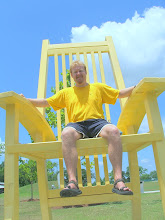The trickster makes an appearance in many of the works I teach in my Honors European Literature class at the Academic Magnet High School. In Milton's epic poem Paradise Lost students evaluate Satan's character as the trickster archetype by explaining the symbolic meanings created when he changes into a serpent and tempts Eve. They also examine the trickster in more modern works such as Dr. Seuss' children's book The Cat In The Hat. In in addition to learning how to apply psychoanalytical literary criticism in an analysis they also evaluate the cat's character as a trickster who challenges the status quo.
Definition of the Trickster
So what is a trickster? I use the following definition when introducing my students to the trickster archetype:
The Trickster openly questions and mocks authority, encourages impulse and enthusiasm, seeks out new ideas and experiences, destroys convention and complacency, promotes chaos and unrest. At the same time, the trickster brings new knowledge and wisdom. Even when punished horribly for his effrontery, his indomitable spirit keeps him coming back for more. The trickster is often a master of disguise and may have magical or super-powers.
What purpose does the trickster serve in a story?

In most stories the trickster helps us gain a new perspective on the world as we know it by turning it upside down. He or she challenges the status quo by manipulating situations, changing appearances, or stirring up trouble. For example they evaluate how much the cat's "trickster" games such as "Up up with a fish" impact the children's final decision to take responsibility for their own actions.
The trickster at Spoleto
Here is a quick overview and analysis of the trickster characters I have encountered so far at Spoleto performances this year.
Between the Devil and the Deep Blue Sea

In this play the Devil takes on many of the trickster characteristics.
Master of disguise: The devil takes on many different disguises ranging from the more folksy "Jack Black" (as seen in the picture above) to the more traditional forked tongued and horned attire.
Magical powers: In the episode "Speak of the Devil and he Shall Appear" the devil uses his powers to call a flock of geese to consume a maiden who is feeding them pieces of bread.

